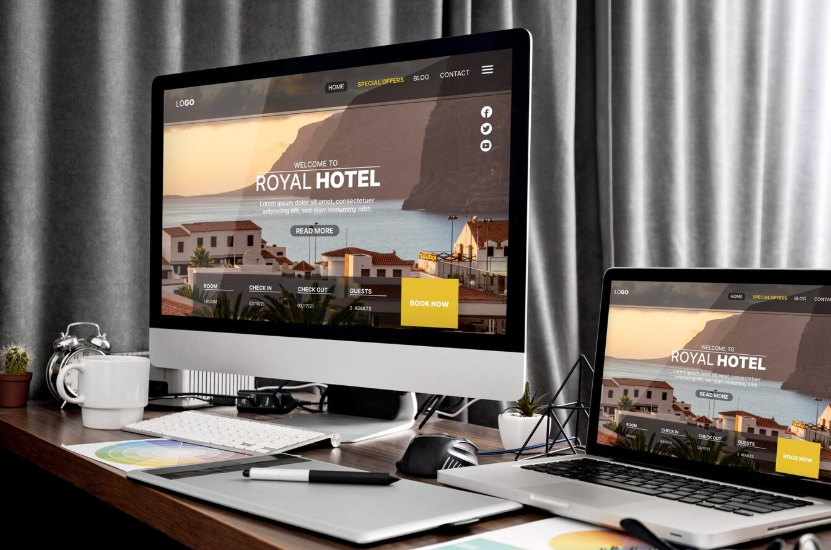Website design plays a much larger role in online success than many realize. It’s not just about looking modern or matching brand colors; it’s about shaping how users interact with a business from the moment they land on the homepage. In many cases, a website’s design can determine whether a visitor sticks around, engages, and eventually becomes a customer.
First Impressions Start with Design
When people visit a website, their initial judgment is almost instant. In just a few seconds, they decide whether the site is worth their time. Surprisingly, this decision often isn’t based on the actual product or content, but on how the website feels. If the layout is messy, the text is hard to read, or the colors are too harsh, users might leave without clicking anything.
On the other hand, a clean, thoughtfully designed site builds immediate trust. It suggests that the business is professional, credible, and attentive to detail. Much like walking into a well-organized store, users feel more at ease and more likely to explore.
Clear Navigation Keeps Users Moving
Even the most visually appealing design will fall flat if users don’t know where to go. Navigation should feel natural. If visitors can’t find key information like contact details, product pages, or pricing, they’ll likely exit quickly.
Elements like menus, buttons, section breaks, and labels must be consistent and intuitive. A well-structured design allows users to move through the site without stopping to figure things out. And the smoother the experience, the more likely they are to browse longer and move closer to converting.

Mobile Responsiveness Is Now Expected
Today, the majority of web traffic comes from mobile devices. A website that isn’t designed to work well on a phone isn’t just inconvenient, it’s a liability. If a site breaks on smaller screens, has hard-to-tap buttons, or loads in a distorted layout, users lose patience and move on.
Good website design takes mobile users seriously. Responsive design ensures that the same content is accessible and user-friendly across different devices, from desktops to tablets to smartphones. Businesses that ignore mobile optimization risk losing a large chunk of potential customers.
Speed Can Make or Break the Experience
No one likes waiting. If a site takes too long to load, users bounce, even if the content is excellent. Speed is often the silent deal-breaker in online engagement.
Designers need to consider performance from the beginning. That means compressing large images, reducing unnecessary animations or scripts, and choosing reliable hosting solutions. The faster the experience, the better the chance of holding a visitor’s attention and guiding them toward conversion.
Visual Hierarchy Shapes User Behavior
How content is arranged on a page matters just as much as the content itself. Through layout, size, color, and spacing, design can guide the user’s eyes to the most important parts of a page.
For example, a large, bold headline draws attention before smaller paragraphs. A brightly colored call-to-action button catches the eye and invites clicks. Thoughtful design helps prioritize information, making it easier for users to understand what they’re seeing and what they should do next.
If everything on a page looks equally important, users may feel overwhelmed. But with a clear hierarchy, visitors are subtly led through the site’s message in the right order, improving both understanding and engagement.
Emotional Impact and Brand Consistency
Design doesn’t just speak to logic — it also affects emotion. The colors used, the typefaces chosen, and the imagery included all of these elements create a mood. They shape how people feel about a brand.
For instance, soft colors and rounded fonts might suggest friendliness and approachability, while sharp lines and strong contrast might convey professionalism or authority. The key is consistency. When a website’s design reflects the brand’s values and tone, users are more likely to connect and trust what they see.
Simple Designs Often Convert Better
It’s tempting to include everything on a single page: all the options, all the links, every possible selling point. But clutter can confuse users and dilute the message. In contrast, simple, focused designs often perform better in terms of conversions.
That doesn’t mean stripping the site bare; it means prioritizing. What’s the most important thing a visitor should do on this page? Sign up? Buy? Learn more? Everything else should support that goal. Less noise, clearer message, better results.

Conclusion
Website design is more than a digital façade. It’s a practical, measurable part of how users behave online. A thoughtfully designed site keeps people engaged, helps them find what they need, and nudges them toward taking action — whether that’s making a purchase, filling out a form, or signing up for more information.
In short, design isn’t just about looking good. It’s about making things work better. A site that’s visually appealing, easy to use, fast, and mobile-friendly doesn’t just attract attention, it keeps it. And in today’s fast-moving digital world, that’s what turns visitors into customers.







